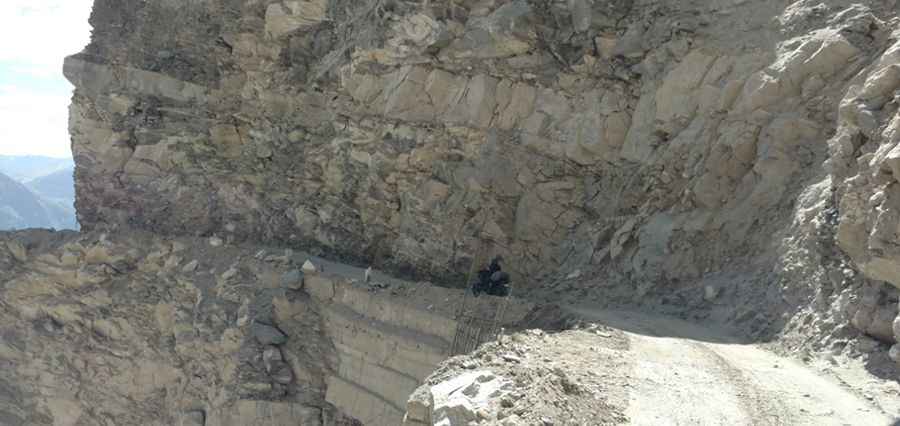The unnerving and treacherous road to Malling Nala is not for those with vertigo or a fear of landslides
Malling Nala is a high mountain pass at an elevation of 3,875m (12,713ft) above sea level, located in Himachal Pradesh, India. The pass is notorious for landslides, rushing water, and general chaos. People suffering from vertigo are advised not to look outside, as the views can be both unnerving and harsh.

How long is Malling Nala?
The road to the summit is mostly paved, though some sections are gravel due to weather conditions. It’s part of NH505 and spans 22.7 km (14.10 miles), running north to south from Chango to Nako.
What’s "The Landslide"?
This area is highly prone to landslides and rockslides. Near the summit, a section commonly known as "The Landslide" often sees the entire mountainside sliding down, leaving large gaps in the road. The drive is dangerous, with loose, rocky terrain. Even the edges of the road are made of slate rocks, adding to the danger.
How challenging is the road through Malling Nala?
This route is not recommended for those prone to car sickness. A constant stream of water flows across the narrow road, making it slippery and extremely hazardous for vehicles. Landslides frequently block the road. A 4x4 vehicle is required. The section through the pass is very narrow, with a steep incline and a sheer drop on one side. One mistake can result in a fatal fall. Rocks and stones also frequently fall without warning. Near the summit, there is a small temple, known as Maata Temple.
Is Malling Nala open in winter?
The road is generally closed in winter, though the skilled locals of Spiti continue to use it year-round. The pass becomes especially treacherous during bad weather, so it’s wise to check conditions before starting your journey. Temperature swings between day and night can be extreme, so dress accordingly. The area is also windy and dry, so be sure to bring sunscreen and lotions. Snow chains are essential. Even though you will be acclimatizing gradually during the drive, it’s important to take precautions against altitude sickness—avoid overexertion and stay hydrated to prevent illness.
Pic: adiroks skull